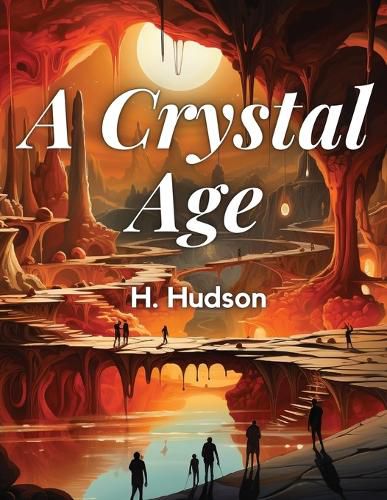Readings Newsletter
Become a Readings Member to make your shopping experience even easier.
Sign in or sign up for free!
You’re not far away from qualifying for FREE standard shipping within Australia
You’ve qualified for FREE standard shipping within Australia
The cart is loading…






This title is printed to order. This book may have been self-published. If so, we cannot guarantee the quality of the content. In the main most books will have gone through the editing process however some may not. We therefore suggest that you be aware of this before ordering this book. If in doubt check either the author or publisher’s details as we are unable to accept any returns unless they are faulty. Please contact us if you have any questions.
"A Crystal Age" it is a novel written by William Henry Hudson, an Argentine-English author, ornithologist, and naturalist. The book was first published in 1887 and is considered one of the earliest examples of dystopian science fiction.
The story is framed as a narrative within a narrative. It begins with the protagonist, an unnamed narrator, discovering an ancient manuscript while exploring a cave. The manuscript tells the story of a man who, after getting lost in a remote region of South America, stumbles upon a hidden utopian society.
In this utopia, known as the Crystal Age, the inhabitants live in harmony with nature and each other. The society has achieved a state of perfect balance and enlightenment. The people are vegetarian, live without violence or conflict, and have advanced scientific and artistic achievements. The crystal of the title refers to the transparent material that constructs their buildings and symbolizes the clarity and purity of their way of life.
As the protagonist explores this utopian world, he contrasts it with the civilization he came from, which is portrayed as corrupt and decadent. The novel raises questions about the nature of progress, the consequences of industrialization, and the possibility of creating a utopian society.
"A Crystal Age" is a thought-provoking work that explores social and environmental themes, making it a significant contribution to early science fiction literature.
$9.00 standard shipping within Australia
FREE standard shipping within Australia for orders over $100.00
Express & International shipping calculated at checkout
This title is printed to order. This book may have been self-published. If so, we cannot guarantee the quality of the content. In the main most books will have gone through the editing process however some may not. We therefore suggest that you be aware of this before ordering this book. If in doubt check either the author or publisher’s details as we are unable to accept any returns unless they are faulty. Please contact us if you have any questions.
"A Crystal Age" it is a novel written by William Henry Hudson, an Argentine-English author, ornithologist, and naturalist. The book was first published in 1887 and is considered one of the earliest examples of dystopian science fiction.
The story is framed as a narrative within a narrative. It begins with the protagonist, an unnamed narrator, discovering an ancient manuscript while exploring a cave. The manuscript tells the story of a man who, after getting lost in a remote region of South America, stumbles upon a hidden utopian society.
In this utopia, known as the Crystal Age, the inhabitants live in harmony with nature and each other. The society has achieved a state of perfect balance and enlightenment. The people are vegetarian, live without violence or conflict, and have advanced scientific and artistic achievements. The crystal of the title refers to the transparent material that constructs their buildings and symbolizes the clarity and purity of their way of life.
As the protagonist explores this utopian world, he contrasts it with the civilization he came from, which is portrayed as corrupt and decadent. The novel raises questions about the nature of progress, the consequences of industrialization, and the possibility of creating a utopian society.
"A Crystal Age" is a thought-provoking work that explores social and environmental themes, making it a significant contribution to early science fiction literature.